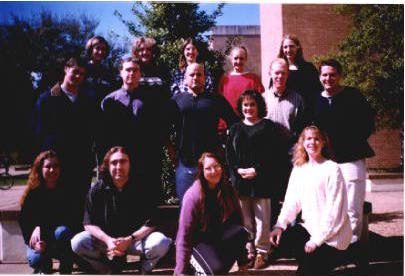
The goal of a service-learning project is toenhance learning by sharing with others and actively reflecting onthe process afterward. The community, or "others" involved shouldalso benefit from this interaction. This semester we will have twodifferent sets of interections with the community. In late March wewill interact with seventh-graders from a local middle school. InApril, we will collect data to help the city design a brochure fornew residents.
Service-learning projects are one way toapply what we know from research about perception to needs outsidethe classroom. There are many other areas where applied research isbenefitting individuals in society at large. This course will alsoemphasize such applied areas, and as their first paper, the studentswill each summarize the current status of an area of appliedperception research.
All of the above will be documented on thiswebpage. Thus, this page will be updated as the semester progresses.If you are interested, the webpages from previous classes are alsoavailable: 1997, 1998.
Return to Perception 440 information page.
The Class:

Back Row: Lora Muxworthy,
HeatherMcCown, Allison Reynolds, Rachel Waits, Rebecca Woods
Middle Row: Chris Ramos, Nathan Hay, Luke Cantu, Laurie
Moses,David Koepnick, Tim Ballew
Front Row: Laurie Gallaway, Shawn Davis (TA), ChristinaWillis,
Dr. Lauren Scharff
On March 29th and 31st, the class visitedTJR Middle School, gave presentations and interacted withseventh-graders in Mrs. Leah Kahn's science class. The interactionsinvolved many demonstrations which helped the students understandsome basic principles about perceptual processing and some of theeffects of perceptual aging. For a summary of these visits and somepictures, clickhere.
The City of Nacogdoches wanted to design abrochure for new residents. They enlisted our help in designing abrochure that would be perceptually appealing, and readable. Theclass designed a two-part approach to gather data before making theirrecommendations to the city. The influences of the factors of textcolor, background color, and font type were investigated bycollecting reaction times for computer-presented text. Subjectivepreferences for the same combinations of these variables werecollected for both the computer stimuli and for sample brochurescreated using content provided by the city. Clickhere for one of the student researchpapers summarizing this project.